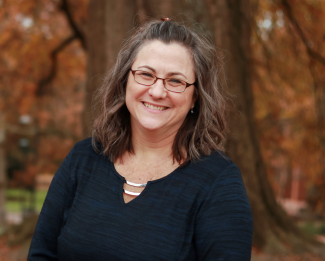by Jeanne Preisler •
The N.C. Division of Social Services entered unknown territory a few years ago to develop the North Carolina Child Welfare Family Advisory Council (CWFAC).
All the Voices at the Table
This council is unique because it has all perspectives “at the table” engaged in meaningful conversations and problem-solving. This includes birth parents, kinship parents, foster parents, adoptive parents, and young adult alumni of the foster care system. These CWFAC members meet with state and county staff to dive in and develop solutions to problems that will work for the families the system serves. I have the great honor and privilege to work with these amazing people, each striving to improve family engagement and develop families as leaders in child welfare.
If you have connected with child welfare in the past few decades, you have likely heard staff often use the phrase “safety, permanency, and well-being.” Each of these words is defined by our federal partners, but they are also words used in everyday language, so many people understand them differently. For this article, we wanted to look more closely at permanency.
Some thought of it as a destination, others a feeling, others as a commitment.
Perspectives on Permanency
The federal definition for permanency is “children have permanency and stability in their living situations and that family relationships and connections are preserved.” But what does that mean in real life?
To find out, I asked some CWFAC members. I hope sharing a variety of views on permanency will help resource parents feel better equipped to work in partnership with their child’s family of origin, and that children will heal and thrive more quickly.
CWFAC members thought of permanency similarly but framed it differently. Some thought of it as a destination, others a feeling, while others thought of it as a commitment.
A Destination. From a destination perspective, the word permanency was the resolution of a deeply personal, sensitive, and often painful and complicated family issue. It was the process of interacting with Child Protective Services. It was all of the meetings, the case plans, the anxiety, and emotions. It was a long, transformational experience.
A Feeling. From a feeling perspective, permanency is a place where the child or youth feels supported and feels a connection. When a feeling of connection is made, the youth gains a sense of belonging and can begin to get their needs met. The sense of belonging can be instant or it can take a while. But at the end of the day, the child feels accepted for who they are.
A Commitment. From a commitment perspective, permanency means forever. As CWFAC member Barbara Young put it, “It means being there for a child on their first day of school, their first day behind the wheel, their first job, their first love, and their first heartbreak. It means supporting them emotionally and financially, helping them set goals and reach for the stars. It means watching them grow into young men and young women who have a sense of purpose.” Permanency is providing youth with life-long support so they have a home for the holidays. It means being grandparents for their future children.
It’s Never Too Late
And it’s never too late for permanence. My daughters (one through kinship and one through foster care) are in their 30’s now. We processed their adult adoptions just last year. In my mind, I was always their forever home. But their adult adoptions helped them know it more completely. And it’s lovely to be able to legally call them my daughters and have a legal relationship with my granddaughter. I’ll say it again: it’s never too late for permanence.
And no matter which perspective they viewed permanency from—as a destination, a feeling, or a commitment—each CWFAC member I spoke to highlighted the importance of keeping the child connected to their family of origin, even if permanence is not possible with them. As one put it, “We aren’t rewriting the young person’s narrative to remove the child’s first family. We’re only adding to it.”
Jeanne Preisler is a Program Coordinator with the Center for Family and Community Engagement at NC State University. She would like to thank Kelly Kirk, Barbara Young, and Gina Brown for speaking with her for this article.


